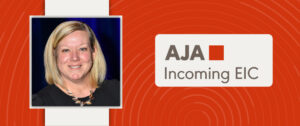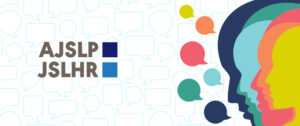For more than 50 years, Better Hearing and Speech Month (BHSM) has been an important opportunity for ASHA to raise awareness about communication disorders and what ASHA members can do to help. This year, we’re also celebrating the 10-year anniversary of the Identify the Signs campaign, which emphasizes the importance of early detection to prevent and treat communication disorders.
In honor of BHSM, we’re celebrating this milestone by showcasing new and trending research on early identification and intervention. Recently published articles by all five of ASHA’s journals highlight the importance of early identification and intervention and give ASHA members new resources.
New Tools and Ideas in Early Identification
Early Identification of Children at Risk of Communication Disorders: Introducing a Novel Battery of Dynamic Assessments for Infants: Children may miss out on early intervention opportunities because existing assessment instruments are most valid for children over 3 years old. In this article, the authors discuss promising preliminary data on a set of dynamic assessment measures designed for infants.
Pediatric Feeding Disorder in Early Intervention: Expanding Access, Improving Outcomes, and Prioritizing Responsive Feeding: Many conditions treated by ASHA members automatically qualify for early intervention therapy services; however, families of children with pediatric feeding disorder may encounter barriers to these services on a state-by-state basis. In this article, the authors discuss pediatric feeding disorder and explain how an early intervention program could support children’s growth and development and allow them to access more educational opportunities.
Building Collaborative Capacity in Early Intervention Preservice Providers Through Interprofessional Education: Early intervention often involves a larger team of professionals working alongside ASHA members. Graduate students in speech-language pathology, physical therapy, occupational therapy, and other specialties attended a 2-day training program in interprofessional practice, and their post-training survey results provide important insights on increasing interprofessional education and practice.
Early Intervention in Children Who Are Deaf or Hard of Hearing
Characterizing North Carolina’s Deaf and Hard of Hearing Infants and Toddlers: Predictors of Vocabulary, Diagnosis, and Intervention: Authors of this article examined 100 deaf or hard of hearing infants and toddlers in early intervention to identify variables that can predict vocabulary delays. Notably, they found a number of such factors, including ones that audiologists can address directly in the clinic.
Intervention Research to Increase Pediatric Hearing Device Use: A Scoping Review: Although young children who use hearing aids show better language outcomes when hearing aids are worn 10 or more hours per day, actual use is frequently below this benchmark. This review surveyed existing research on the topic to provide clinicians with evidence-based tips on increasing hearing device use for young children—and to illuminate gaps that can inform future research.
Building a Strong Foundation
This year, the theme of BHSM is “Building a Strong Foundation.” We hope that these featured articles can help you in your mission to help children with communication disorders and their families build a strong foundation for future success.
You can find more resources on the official BHSM 2023 website. Customizable press releases and resources in English and Spanish let you share the goals of BHSM with friends, clients, and on social media. This May, make sure to help spread the word about the importance of early identification and intervention—and what ASHA members do every day to help!







